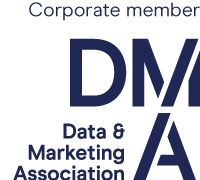As marketers, you know how crucial it is to gather the right data lists for your email marketing campaigns.
There could be any number of reasons why you might choose to purchase a B2B email marketing list and broadcast out to it as part of your overall marketing strategy. It could be that you are a new business and want to 'introduce' yourself to the world. Build up some awareness of your brand in the business arena.
You might be hosting an event or conference and want to reach out to more delegates in specific business sectors. Perhaps with a view to putting more "bums on seats". Or you simply want to win more business which is true of most email campaigns. Why else would you do it?
Having decided that you want to win more business by reaching out to more potential customers and prospects, what do you do next?
Your route to a successful campaign will depend on several factors. You'll need to get it right if you are to have a decent chance of achieving your objectives. Here are our top tips to effectively use data lists for successful email marketing campaigns.
1) Who should I buy a list of B2B emails from?
Where and who you choose to buy your data from will be pivotal to the success or failure of your email campaign. Here are some bits of advice when choosing where you might source your business email data from:
Do some homework on your potential data provider.
Are they a data owner, list re-seller, or an independent data broker?
Whatever they are, check that they are bona fide. Are they ICO registered and DMA members? If they are credible then they will have to be registered with these professional bodies. Check out their website and investigate their existing client portfolio. Look at their testimonials.
Is it clear how they source their data?
Are they open and honest about how they source their data? If they don't want to tell you where their data is from then you should be very wary. Reputable companies will happily share this information so that you can have peace of mind that the data is relevant and high quality.
Do they update, verify & cleanse their database on a regular basis?
If so, within what timeframes? If they can't tell you the average age of their database and how it is maintained and cleansed, that's a sign that the data is low quality and won't get you're the results you want.
Do they offer guarantees?
A good data provider will be more than happy to offer you a guarantee against delivery rates and email bounces. Any company that won't do this is just telling you that their data could be poor quality and they are reluctant to put their money where their mouth is.
Is their price too good to be true?
Are they offering you 50,000 email records for £300? It sounds like an amazing offer, but data at this price cannot be well managed and maintained - and that's a fact. Cost per 1,000 records should be anything from £300 to £1,000. The cost of data will depend on what you are looking for. The more niche your requirement the more likely it is going to be in the higher cost bracket.
Another consideration is the supplier you are purchasing from. Each supplier will have their own cost for data. It's always best to research the market to see what data/price suits you. Using a data broker will be beneficial for this as it's their job to get you the best data for your campaign and budget, giving you guided access to the ENTIRE data market.
Know when an opt-in is an opt-in.
Do they use phrases like "our data is double or triple opt-in"?
Yes? Opt-in is a myth - what they really mean is that their records haven't opted out. It's just sales pitch and marketing jargon designed to bamboozle you. Avoid companies making claims like this.
Do they offer samples?
Are they happy to provide you with 'live' sample data? If not, then it's a sign that they have little confidence in their data quality. If they do provide you with samples, these are often doctored so they are 100% up to date. This is so that you make a purchase on the strength of 20 perfect sample records. When you then buy that 20,000 record list, just watch the drop-in quality.
Are they trying to over-sell to you?
Are they trying to sell you thousands of records when you're only looking for small pilot test list? Unfortunately, this is down to sales pressure. List owners only have one product to sell to you and as a result they will tell you that their data is the best. That's why, according to them you need to buy loads of it - it's just a sales pitch.
Ensure that whoever you choose to source your B2B email marketing lists from are credible and ethical. If you're unsure, speak to an independent and impartial list broker and you'll get an honest appraisal.
2) How much does a B2B email list cost?
If we had a pound for every time we've been asked this, we wouldn't be databrokers - we would be Kardashians. It's a bit like being asked "how much does a new car cost?" and of course the answer is that it depends on what sort of a list you want.
In car terms, do you want a Volkswagen Golf or a Bentley? It's not so much about what car you think you want - it's more about what car you need. You wouldn't buy a Ferrari to do the school run. It might be big and bold, but if it's not fit for purpose then it's a waste of money.
Data is much the same. Prices can range from about £200 to £1,500 per 1,000 records depending on what you need. If you're looking for a very generic sample of people (For example, UK hairdressers) then a good quality list should be within the £200 to £300 per 1,000 records price range.
If you're looking for very specific job titles within niche business sectors, then you'll need a specialist data list provider. In this case you can expect to pay anything between £500 to £1,500 per 1,000 records.
Don't be fooled into thinking volume is king. There's no point in buying 20,000 email records if the sample doesn't match your target client profile. You're better off buying 2,000 records that actually match your specified criteria. They may be more expensive, but if the data list is spot on in terms of the target audience, then it will yield significantly better results.
With data, the 3 key things to remember are quality, quality and quality.
3) How many records will I need to buy?
When deciding how much data to purchase, realistically your final decision is often determined by your budget. But let's assume for a moment that there are no budget restraints. What do you need to consider in terms of the volume of data you need?
A basic rule of thumb with quality email data campaigns is a 10% open rate and a 1% click through rate. If your product or service is high end and one purchase constitutes a profit of £25,000, then you may only need a small purchase of 1,000 very targeted records. That one piece of business that pays for the campaign in one hit and generates a healthy profit. However, consider your ROI if the 'widget' that you're marketing sells for £25 a time. You're going to need a lot more data to cover and recoup some profit here. At an average of 1% click through, a 1,000-record purchase probably won't generate sufficient pay-back for you. Work backwards through this ROI equation. Figure out how many pieces of business you need to win on with your campaign and how much data you will need to get you there.
It's worth mentioning when buying email marketing lists, it's an idea to ensure that there are also contact telephone numbers available. That way you can do tele-marketing follow-ups to your warm responders i.e. clickers and openers. Ideally, this should be done in the days immediately after you've sent out the email broadcast.
4) What email broadcasting platforms can I use?
There are many email broadcasting products on the market but they're not all licensed for 3rd party email marketing lists. Investigate this very carefully when buying an email broadcasting tool in-house, and always check the platform's terms & conditions. It will save you in the long run.
The consequences of using a non-compatible email broadcasting product can be very damaging to your campaign. It will certainly have a direct impact on your delivery rates. With good quality data, delivery should be at 90+ delivery rate against hard bounces.
The other option is to ask the list owner or list broker if they offer a managed email marketing broadcast solution themselves. You will find that many of them do. This may mean spending a little extra on the campaign, but it ensures that the email is delivered on a viable system. It can save you a lot of time and resource in hiring the services of email broadcast experts.
5) How often can I use the data?
This largely depends on what kind of B2B data licence you choose to purchase. There are 2 types:
Single use license: Allows you to send one email only to the contacts on your list
12-month multiple use license: This allows you to email contacts on multiple occasions during a designated 12-month license period. Many data providers will cap the maximum number of email uses permitted during the 12-month license period. This is to prevent over-use of email data.
Never over-use your purchased email data. You may be as keen as mustard to drum up interest in your product – and that's great! But sending out 3 emails a week to the same audience for 6 months isn't going to make you very popular. Complaints about your company to the ICO and a £50,000 fine for misuse of data will leave a very nasty taste in your mouth.
Think about how many emails you delete every day from people trying to sell you something. Treat your own audience as you wish to be treated – less is more and quality is better than quantity.
Start off by sending one high quality, relevant email per month to help your target audience warm to your brand. That way you start to grow on them and become front of mind.
6) What results can I expect?
This can depend on lot of variables but assuming that:
a) You've used quality email marketing data
b) You've used a suitable email broadcasting piece of software
c) The subject line and content of your email was clear and appealing.
Then you are generally likely to see:
10% open rate (This is an average - the rate is usually around 8% to 12% but we've also seen upwards of 15%)
1% click through rate (Again, this may fluctuate between 0.75% and 1.5%)
Typically, 10% of clickers will convert into business (Again, this could be as good as 15% or as low as 5%)
Make sure you're realistic with your expectations and start the campaign with a clear goal - if you want sales then you need to gear your content towards getting customers to click and spend. If you're happy just to raise awareness for your brand then your content can be more editorial, but you should base success on open rates rather than clicks and sales.
So, there you have it. A whistle stop guide to using purchased B2B data lists for your email marketing campaigns.
If you have other questions that haven't been covered here, then why not get in touch with us directly. We can discuss it in more detail. Our advice is free, and we are independent and impartial.






